The vast, roaring, and fertile Southern Ocean is a world-famous sea pasture. It breeds an astonishing number of marine life. In addition to large creatures such as penguins and seals, whales are even more outstanding. The blue whale is the largest mammal in Antarctica and the largest mammal in the world. The number and catch of whales in the Southern Ocean ranks first among all oceans in the world. There are about 1 million heads in existence.
Whenever the Antarctic summer comes, giant whales from the Southern Hemisphere head south one after another, making the Southern Ocean a world of whales.
1. Category distribution
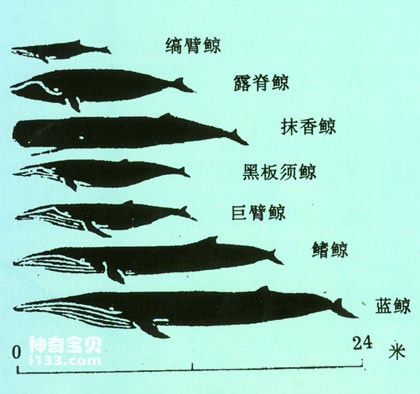
Scale map of Antarctic cetaceans
The whales that inhabit the Southern Ocean are divided into two major categories: baleen whales and toothed whales, with about 12 species. Larger baleen whales include blue whales, fin whales, black-spotted baleen whales, onyx whales, giant-armed whales, minnow whales, right whales, etc.; larger toothed whales include sperm whales and killer whales.
The largest among them is the blue whale, and the most numerous is the fin whale. Boom whales and right whales have been almost hunted to extinction, with only a few survivors, because they swim slowly and are easy to kill.
Whales are widely distributed in the Southern Ocean, and they can be found almost south of the Antarctic Convergence Zone. Their distribution is closely related to the distribution of krill groups. Blue whales are mainly distributed in the floating ice belt. The giant arm whales and black baleen whales live in the southernmost part. The long-armed whales can overwinter in the waters of Antarctica. The right whales are mainly distributed in the Antarctic waters. Subantarctic region; toothed whales are distributed in the Antarctic convergence zone and migrate with seasonal changes.
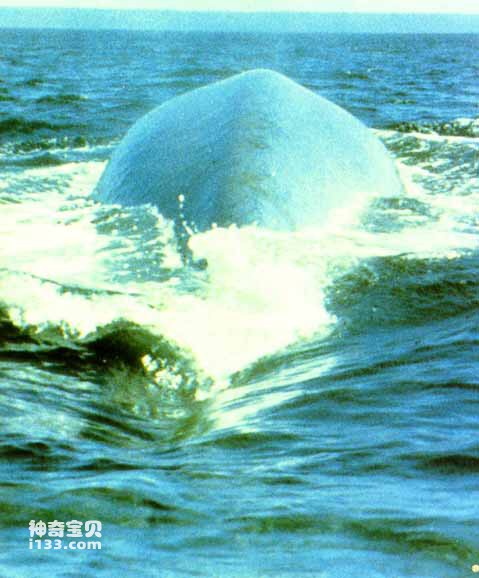
1. Blue whale
Also called the long-tailed whale, it has a body length of 30 meters, an average weight of 150 tons, and the largest one is 190 tons. One of its tongues weighs 3 to 4 tons, enough to fill a large Jiefang truck. Its body is blue-gray or yellow-brown because its skin is covered with a layer of yellow-brown diatom membrane. In fact, its real color is black. Blue whales are one of the first targets of hunting because of their large and fat bodies. Therefore, their numbers continue to decline, with only 200,000 remaining.
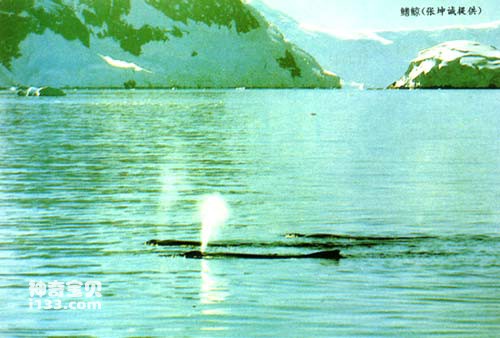
2. Fin whale
The body is 25 meters long and weighs about 50 tons. The back is black, the belly is white, and the sides are light gray. Its body shape is similar to the blue whale, and it is also the most hunted species, causing its number to drop from the original 400,000 to 80,000.
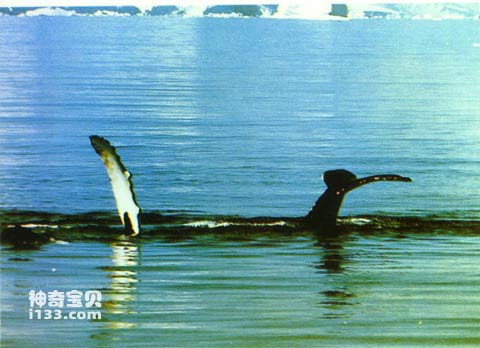
3. Giant-armed whale
Also called humpback whale, it is about 15 meters long and weighs 25 tons. Its back is black and other parts are gray. Its pectoral fins are very long, like a pair of giant arms. Its body is thick and short, and its back is stooped, hence its name. There are only a few of them in existence and it has become a rare species in Antarctic waters.
4. Horse-armed whale
With a length of about 10 meters, a weight of 7 tons, and a slender body, it is the smallest of the baleen whales, with a population of about 200,000.
5. Right whale
It is 18 meters long and weighs about 20 tons. It has a slender body with a black back and grayish white belly. It is a sub-Antarctic species.
6. Sperm whale
Also called the armored whale, it is 18 to 25 meters long and weighs 20 to 25 tons. The largest one reaches 60 tons. It is the largest among toothed whales. Its body color is grayish-yellow, its head is particularly large and wedge-shaped, accounting for 1/3 of its body length. Its body is short and thick, its movements are slow and clumsy, and it is easy to hunt. The existing stock has dropped from the original 850,000 to 430,000.
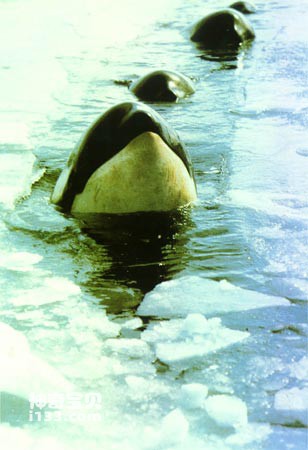
7. Orca
Also called killer whale, it is 8 to 10 meters in length and weighs several tons. It has a black back and a gray-white belly. Its dorsal fin is curved up to 1 meter. It has a slender mouth, sharp teeth, and a ferocious temperament. It is good at attacking prey. It is a penguin and seal. 's archenemy. Sometimes it also attacks similar baleen whales or sperm whales and is the king of the sea.
2. Living habits
Whales are marine mammals that give birth to live babies, nurse their young, and breathe with their lungs. But it is different from marine mammals such as seals, and seabirds such as penguins that use lungs to breathe. It lives in the water all its life, while other marine mammals and seabirds spend some time in the water and some time on land. . This peculiar habit may be related to its origin.
Being good at swimming and diving is one of the common habits of whales and other marine mammals. Whales and seals are excellent divers. The swimming speed of baleen whales is generally 30 kilometers per hour, and 40 kilometers per hour when frightened. The baleen whale has the fastest speed, about 55 kilometers per hour, which is faster than a 10,000-ton ship. Sperm whales swim at a slower speed, generally 10 kilometers per hour, and the fastest is 25 kilometers per hour. The whale's diving time and depth are also amazing. It can dive to a depth of 200 to 300 meters for up to 2 hours. Compared with seals, the diving depth of whales is not as deep as that of Weddell seals, which can dive to 600 meters, but the deep diving time of whales is much longer than that of seals. The long diving time of Weddell seals is 70 minutes, which is only half of that of whales. This difference between deep diving and long diving may be related to the difference in body size. Whales are huge animals, and their movements when diving and rising are obviously not as flexible as the Weddell seals with slender and strong bodies. The whale has a large lung capacity. Its lungs can hold 15,000 liters of gas. It stores a large amount of oxygen when diving and exhales a large amount of carbon dioxide when it rises. This is one of the secrets of its long diving ability. In addition, the heads of whales and seals are very small, less than 1/1000 of their body weight, which may be a common advantage for them to be able to dive long and deep.
The "fountain" breathing method is a unique living habit of whales. When whales live underwater, they close their nostrils tightly. When they come out of the water to breathe, they open their nostrils. With the pressure of their lungs and the contraction of their muscles, they spray out a jet of white water, accompanied by a whistle-like cry. The height and shape of the water jets are used to identify different species of whales. Based on this, experienced whalers can quickly determine the type of whale, its size and distance. For example, the blue whale's water jet is vertical and powerful, thick at the top and thin at the bottom, with a loose top, like a firework, with a range of more than 10 meters. The height of the water spouts of other baleen whales is generally 8 to 10 meters. The sperm whale's water jet is deflected forward and to the left. The jet is weak, short, loose, and only 3 to 4 meters high. There is still debate about the cause and composition of the water column. Some people think it is the waste ejected from the lungs, while others think it is the product of the combination of water vapor in the lungs and the aroused sea water.
Whales in the Southern Ocean mainly feed on krill, but also some crustacean zooplankton such as copepods. Filter-feeding baleen whales migrate from subtropical and temperate zones to Antarctica, where they feast on delicious meals and seek out mates in Antarctic waters. During this period, some populations can accumulate up to 50% of their total body fat mass. Baleen whales eat little in the subtropics, and the fat accumulated in the Antarctic is used to provide the energy they need during the rest of the year. Socket whales are toothed whales that feed mainly on squid and fish.
Whales have huge appetites. A blue whale can eat 8 to 10 tons of krill a day. The volume of the blue whale's mouth is up to 5 cubic meters. When it opens its mouth, a large amount of krill flows in together with seawater. When it closes its mouth, the seawater is squeezed out from the gap between the labial palps, and the filtered krill is swallowed in one gulp.
The habit of most whales in groups is not very obvious. Only sperm whales have the habit of organizing small families. The members are usually a female whale, a calf and a male whale. However, they are often accompanied by adult male whales, waiting for opportunities to move. , fighting for wives and concubines. Sperm whales tend to be polygamous.
Many whales breed outside Antarctica, usually once a year, giving birth to one calf per litter. The gestation period is generally 9 to 12 months, the gestation period for blue whales is 12 months, and the gestation period for sperm whales is as long as 16 months. Baby whales grow very quickly. The weight of a blue whale's fertilized eggs is less than 1 milligram, which is so small that it is difficult to distinguish it with the naked eye. When the cub is born, it is 7 to 8 meters long and weighs about 2 to 3 tons. It is the largest baby in the world today. The cub's nursing period is 7 months, and the daily feeding amount is 400 to 500 kilograms. The milk of female whales is rich in nutrients, with a fat content of 40% to 50%, similar to that of seals, and 10 to 15 times the fat content of fresh milk. Therefore, young whales grow quickly and become fat. During the nurturing period, calf whales can gain weight of 4 kilograms per hour, and can gain 80 to 100 kilograms in a day and night. The growth rate of young whales slows down significantly after weaning. The sexual maturity of blue whales takes 4 to 5 years, and their life span can reach up to 100 years. The life span of baleen whales is generally 40 to 50 years, and can reach up to 100 years.
Migratory life is a common habit of whales, just like the migration of fish and the migration of migratory birds, but the time, season and location are different. Migration is an instinct of whales and is also a necessity for survival. For example, baleen whales rarely eat in other sea areas and mainly eat in Antarctic waters, so they must return to Antarctic waters. Most whales in the Southern Ocean migrate from the subtropical and temperate zones. They arrive in the Antarctic waters around November every year, stay there for about 100 days, and make their return journey in February or March of the following year. Baleen whales stay in Antarctic waters the longest, usually more than 120 days. Some bonneted whales can overwinter in Antarctic waters and breed in the sub-Antarctic region. Most other whale species find mates and mate in the Antarctic region or during migration, and reproduce in temperate zones and subtropics. It is rare to see nursing calf whales in Antarctic waters.
3. The song of the whale
There are legends in ancient Greek mythology that whales can sing. At that time, fishermen on the boat heard a strange and beautiful song under the water. They were fascinated by it, lost their direction, and unfortunately crashed. Later, some people said that this was the sea monster causing trouble, and the sound they heard was the sea monster's moan. However, in recent years, due to the development of science, the myth has become a reality. Scientists finally unveiled the mystery and proved that it was the whale singing. Whales sing minor tunes during migration and during the breeding season. The tunes vary on different occasions, and a new song is changed about once a year. This artistic genius of whales brings joy to their journey life, which is also an intriguing and wonderful phenomenon.
4. Mass suicide of whales
In years when there are a large number of lemmings in the Arctic, they will collectively rush to the ocean and commit suicide, and whales in the Antarctic will also commit collective suicide.
The phenomenon of whale "body suicide" is a great mystery in the biological world. Although it has not been found in the Southern Ocean, it has long occurred in other oceans around the world. People have seen such a scene: in the rolling coastal waters, a group of giant whales will suddenly appear, ranging from dozens to hundreds, or even hundreds. They face one direction, along a route, collectively rushed to the beach and committed suicide. There was nothing people could do about it, and they blocked people from living there. They tried to save them, but they couldn't, so they had no choice but to let them rush towards the shore. That kind of stupidity that would rather die than look back is really puzzling.
However, dolphins can prevent whales from committing "mass suicide" and save their lives. Once, something like this happened along the coast of New Zealand: more than 40 giant whales were migrating to the Antarctic waters. Swim quickly to the shore. People present heard the news and immediately drove speedboats to stop them in an attempt to drive them back to the deep sea. However, this group of giant whales still rushed towards the shore with determination, preferring to die rather than look back, and people were helpless. At this critical moment, people suddenly discovered that several dolphins appeared on the sea. They rushed towards the whales like arrows, blocking the way of the whales and causing them to turn back and enter the deep sea. So all the giant whales saved!
The behavior of dolphins rescuing giant whales is a unique instinct of them, because when dolphins become parents, they have developed the habit of lifting babies out of the water to breathe. Dolphins rescuing people who have fallen into the water and rescuing giant whales from "mass suicide" in the sea may be the development and promotion of this habit. The nature of this behavior remains a mystery.
5. The bloody battle between humans and whales
The sperm whale is a behemoth in the ocean. Since ancient times, people have been terrified of it, and many superstitious and horrifying legends and stories have been circulated to this day.
Fierce battles between humans and sperm whales have occurred many times in history. From the American three-mast whaling ship "Eshesk" being sunk by whales in the early 19th century to the crashes of the Soviet whaling ships "Stuzy Asta" and "Slava 10" in the 1940s, It's all done by sperm whales. Battles between humans and whales have occurred from the Bering Strait in the northern hemisphere to the adjacent waters of the Southern Ocean in the southern hemisphere. About a hundred whaling ships and cargo ships have been knocked over, broken, and sunk; hundreds of whalers have been swallowed by whales.
At the beginning of the 19th century, there was a huge male sperm whale near Moja Island in southern Chile. It was more than 20 meters long and weighed more than 70 tons. Its body color was dark gray, with a wide white stripe on its head. It had a very ferocious temperament. . As soon as it saw the whaling ship, it became furious, rolled up, jumped out of the water upright, and then fell into the water with a thunderous noise, stirring up layers of waves, with white waves splashing more than ten meters high, and then swam out again A few hundred meters away, they lie quietly on the water, spying on the movement, waiting for the arrival of the whaling ship. When the whale boat approached it and threw its darts, it immediately dived into the water, rushed straight towards the whale boat, and used its head with such force that the boat was either broken or overturned. Then, it used its head again. A few sweeps of the tail will instantly destroy the ship. At this time, it opened its big mouth and swallowed the person who fell into the water.
Sperm whales not only fight back against the whaling boats tracking them, but also actively attack large whaling ships and even cargo ships, even if they hit their heads and cause bleeding. The ship sank, but it refused to leave for a long time. It was still cruising around and searching, never letting go of the drowning people who were struggling in the water.
According to incomplete statistics, 30 large and small ships were destroyed by this giant sperm whale, injuring more than 100 lives. However, one day in 1859, this sperm whale, which had been dominant for more than 30 years, was finally killed by the Swedish whaling team in the South Pacific. At that time, it was hit by 17 darts, several of which hit its vital parts and pierced its lungs and right eye. In addition, it was old and frail and was unable to struggle and fight back.
Do sperm whales attack ships in self-defense? American mammalogists answer, no. This is done out of an instinct to preserve the species and future generations. Historical examples of sperm whales attacking ships indicate that they were all caused by male whales. This is probably out of an instinct to defend territory and protect wives, concubines, and children. Of course, it is not ruled out that the male whale may struggle to the death or bite back as a self-defense reaction after being injured.
We created this article in conjunction with AI technology, then made sure it was fact-checked and edited by a Animals Top editor.